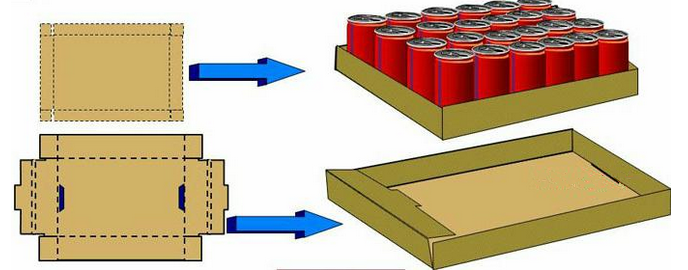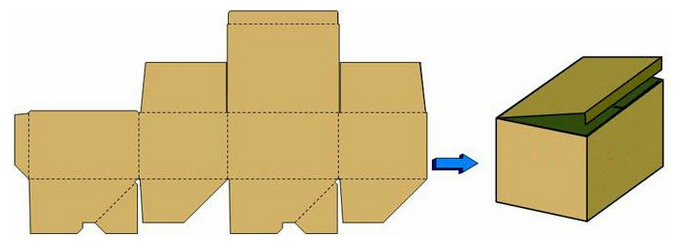In general, we according to your size(cardboard box packaging) and structure to make the fine corrugated packing carton through three or five layers corrugated board. The outer liner can choose Kraft paper, art paper, paperboard, coated paper. On the surface of corrugated carton or corrugated paper box can print beautiful and colorful graphics and images. In this way, not only the corrugated box played a protective effect, and propaganda and beautify the inner goods. This make more and more corrugated carton as terminal sales packaging.
Our production process of corrugated box as a follow:
1. Carefully prepare raw material;
2. Make completed corrugated cardboard;
3. Printing pattern as your design;
4. Die-cut corrugated cardboard;
5. Joint to the flat corrugated carton;
6. QC and put in storage;
7. Delivery according to the agreed date.
The most common structures corrugated box are available.
1. Regular slot carton - RSC, also called A - type 1 box, ordinary corrugated box, the flat corrugated box. Please find the picture.

2. Overlapping box – OSC, General design, overlapping part for 2-3 cm.
Design is to prevent tainted, theft or damage when unpacking, common in clothing, small appliances, plastic products, paper products, etc. Please find picture.

3. Top and bottom corrugated carton is another kind of design of combined corrugated box. The overall compressive capacity of strengthened the protection of the edge.

4. Corrugated Tray, Single corrugated board, wire slot or the die cutting processing. Used in the packaging of tinned or boxed products.

5. The lock at the end of the corrugated carton, mainly used in toys, magnetic tape, etc.

6. Lock bottom plug type folding carton, commonly used in clothing, toys, high value items, glassware, etc. Can be used for single or combination of packaging (box).

Corrugated Paper Box,Single Corrugated Packaging Box,Carton Paper Box,Foldable Single Corrugated Packaging Box
Guangzhou Mingyin Packaging Trading Co.,Ltd. , https://www.mypaperpackages.com
